| CLICK HERE FOR INDEX PAGE |
| |
| THE WOODWORKING VICE |
V.Ryan © 2023 |
| |
| PDF FILE - CLICK HERE FOR PRINTABLE WORKSHEET |
| |
| CLICK HERE FOR POWERPOINT VERSION OF WORKSHEET |
| |
| Quality woodworking vices are designed and manufactured to last. They are made of cast steel with wood faced jaws (which protects the workpiece secured between the jaws). Just in front of the jaws is an adjustable ‘dog’, a very useful addition (as explained later). Generally, there are three recognised sizes of woodworking vice, with widths of 175mm up to 266mm. The larger the width, the longer the opening distance between the jaws. The jaws are operated through the rotation of the handle, which rotates a thread, opening the distance between the stationary and moving jaw. Some vices have a quick release lever, which disengages the thread, allowing for fast opening and closing of the jaws, saving time. |
| |
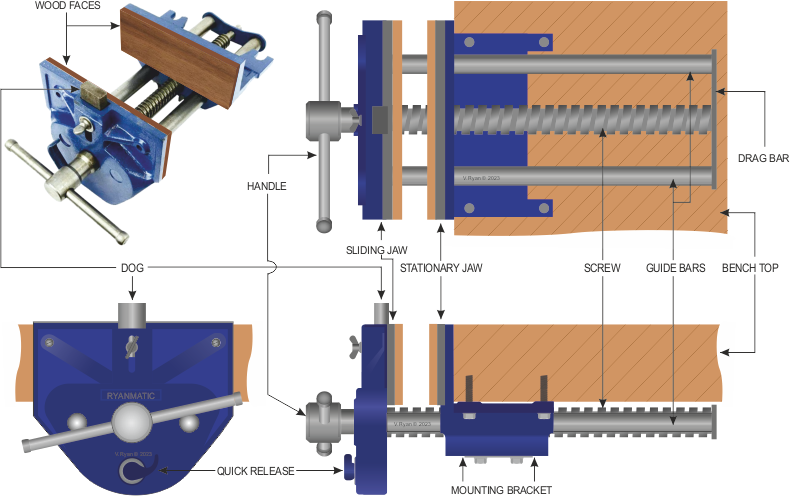 |
| |
|
|
| |
| THE QUICK RELEASE LEVER |
| |
| Opening and closing a vice can take some time, when using the vice handle. The vice handle rotates, working the thread and the moving jaw slowly opens / closes. However, using the fast release lever, disengages the thread, so that the moving jaw ‘slides’ open / closed quickly. |
| |
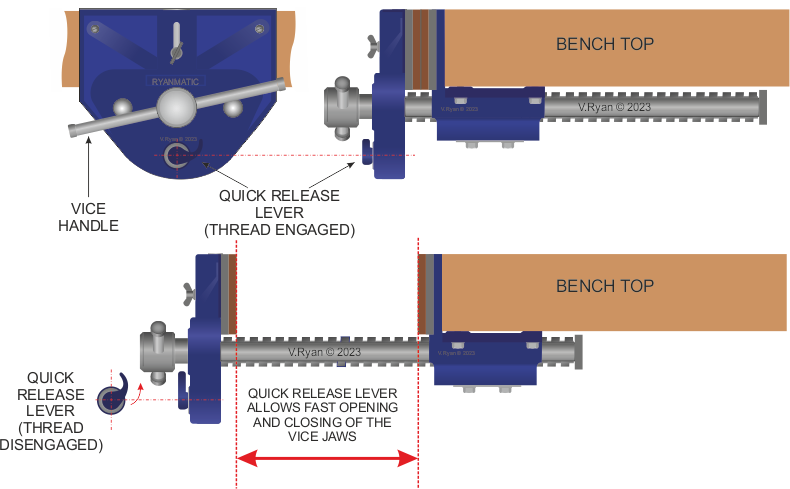 |
| |
| TYPICAL USES OF THE WOODWORKING VICE |
| |
| The diagram below, shows a typical use of the woodworking vice. A piece of material has been secured in the vice and a smoothing plane is being used to smooth / straighten the top edge. Notice the way the person stands, with feet spaced slightly apart, ensuring balance. Usually, the surface of the material being planed, is placed parallel and a little above the top of the vice. |
| |
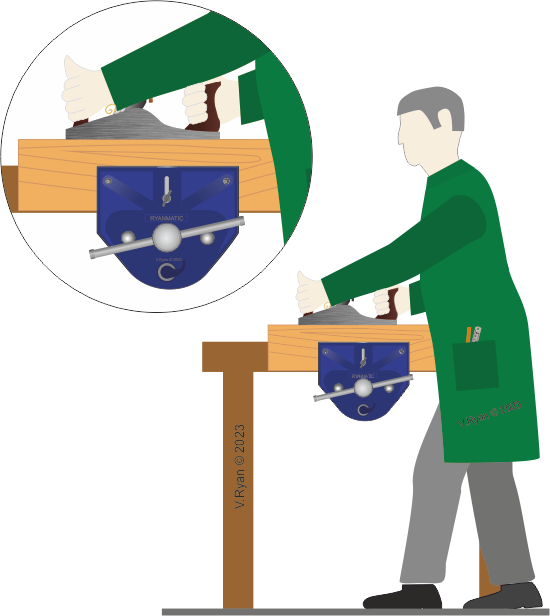 |
| |
|
|
| |
A woodworking vice can be used to ‘clamp’ two or more pieces of material, when gluing. However, a piece of paper should be placed either side of the wood being glued. This should prevent excess glue from spilling on to the vice. Excess glue has been known to glue vices shut.
If glue drips on to the thread or guides, it should also be quickly removed with a cloth. |
| |
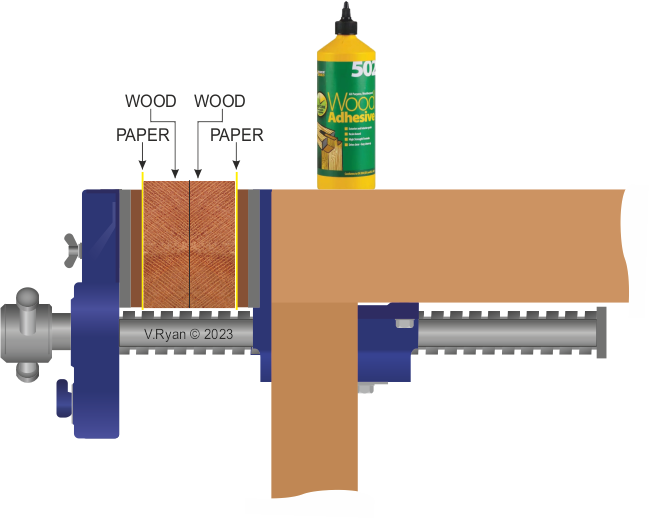 |
| |
| It is common practice for a Bench Hook to be secured in a woodworking vice, when a tenon saw is used to cut a piece of wood to length. |
| |
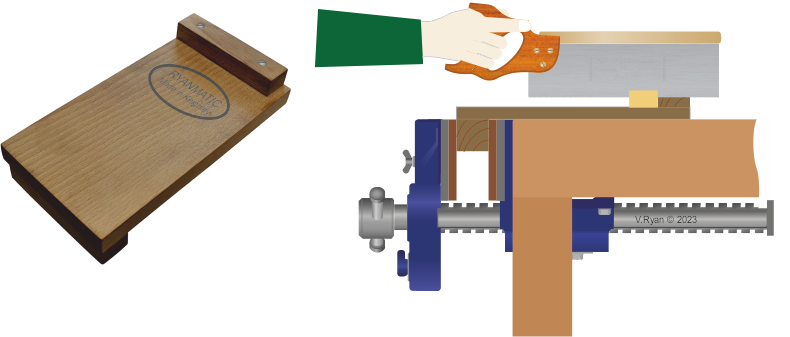 |
| |
The woodworking vice can be used to secure wood whilst it is being drilled.
It is recommended when using this drilling technique, that a supporting piece of wood is placed below the wood being drilled. This helps to prevent the wood from slipping in the jaws of the vice. |
| |
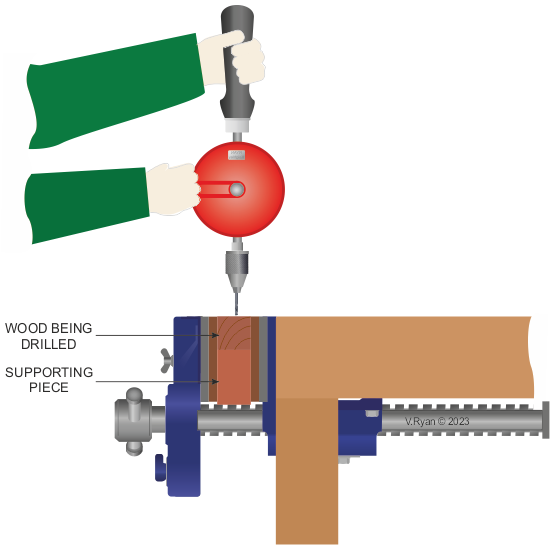 |
| |
|
|
| |
| USING THE 'DOG' OF A WOODWORKING VICE |
| |
| The ‘dog’ of the woodworking vice has been raised and fixed in position by tightening the wingnut. The ‘dog’ prevents movement of wood being planed. The ‘dog’ is a simple but effective way of securing the material. |
| |
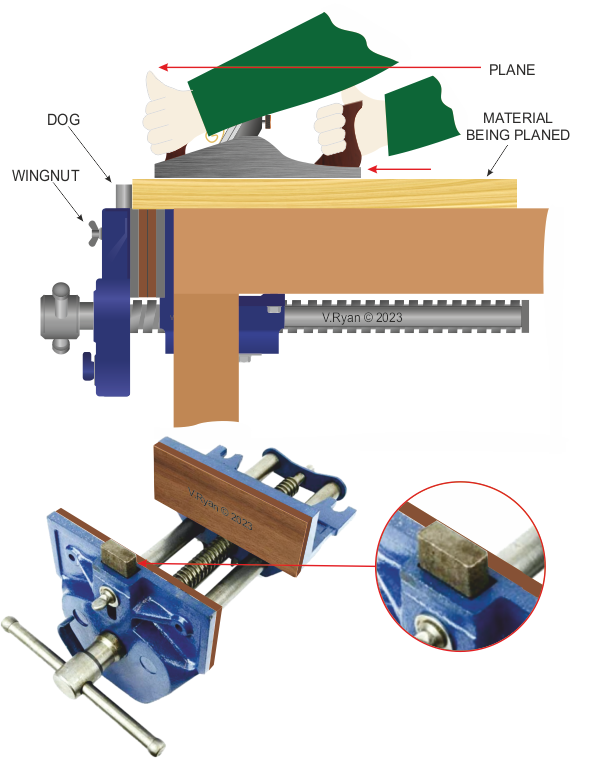 |
| |
| One of the front views of the woodworking vice (A), shows the ‘dog’ in the raised position. This helps to prevent the wood being planed, moving. Diagram B, shows the dog in the lowered position. |
| |
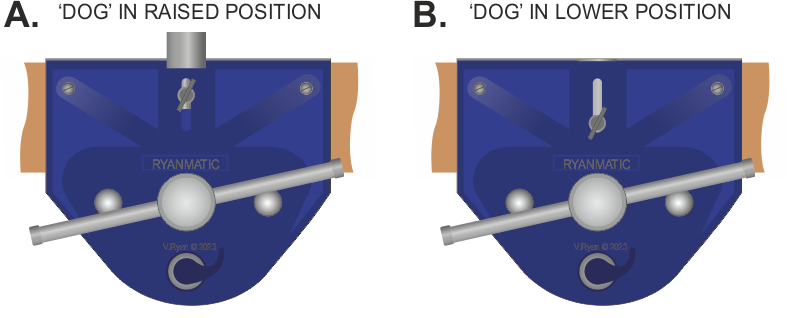 |
| |
|
|
| |
| The plan view of the wood working bench, shows the ‘dog’ holding the wood being planed, in position. |
| |
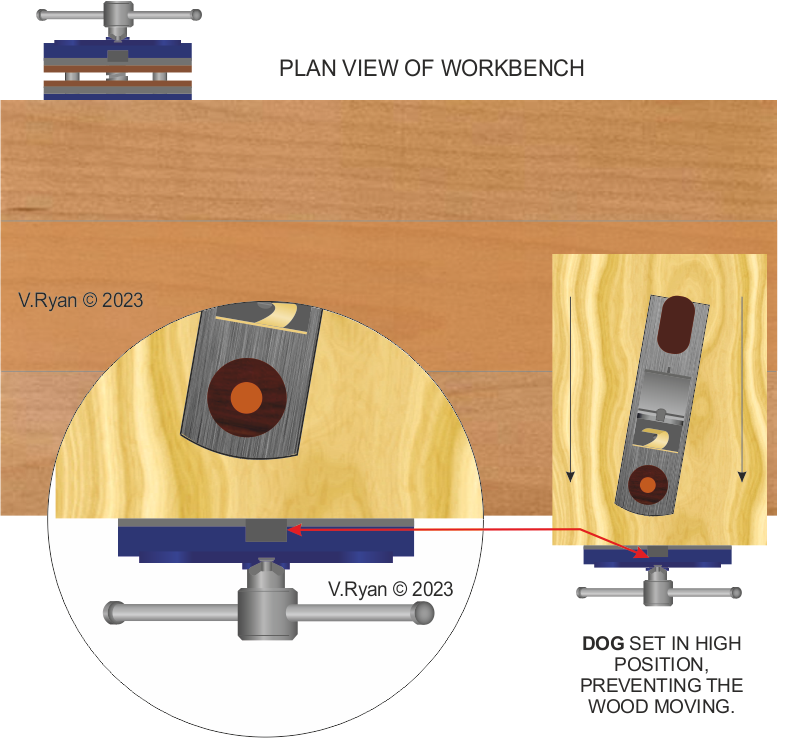 |
| |
| |
| CLICK HERE FOR EQUIPMENT AND PROCESSES INDEX PAGE |
| |
|
| |
|








